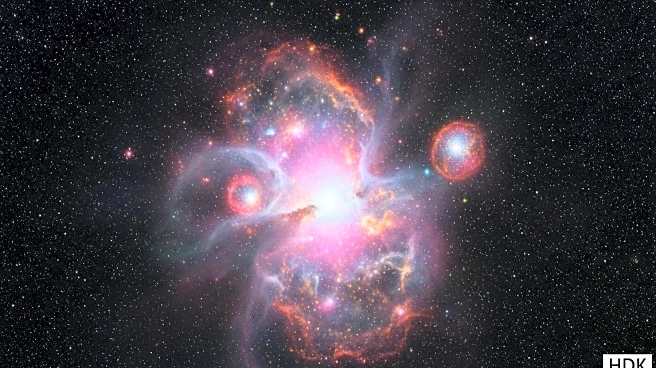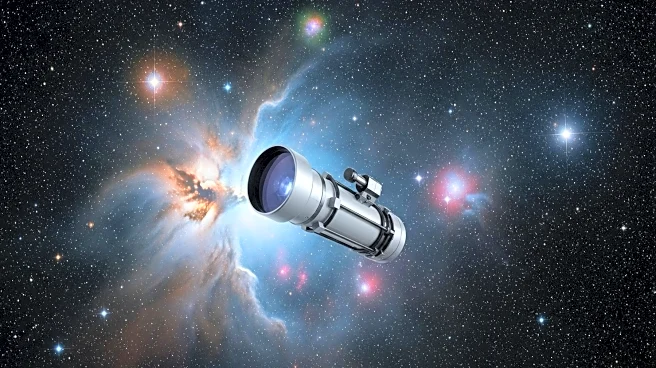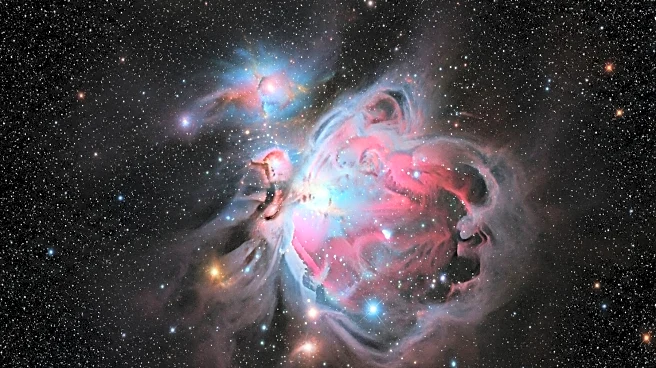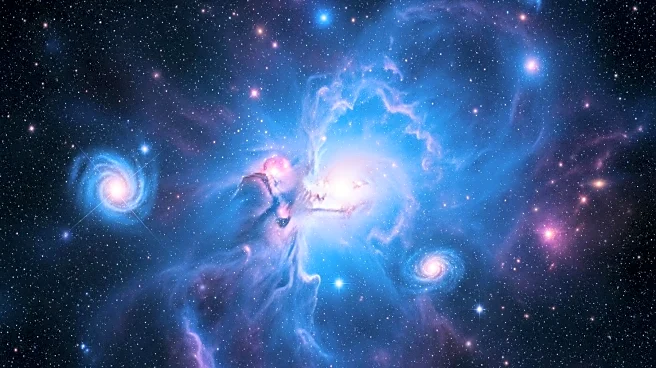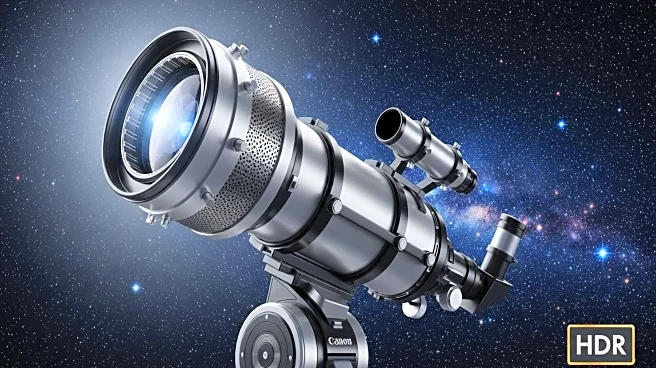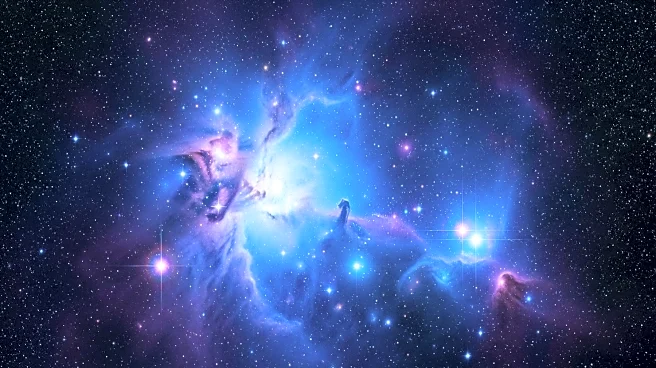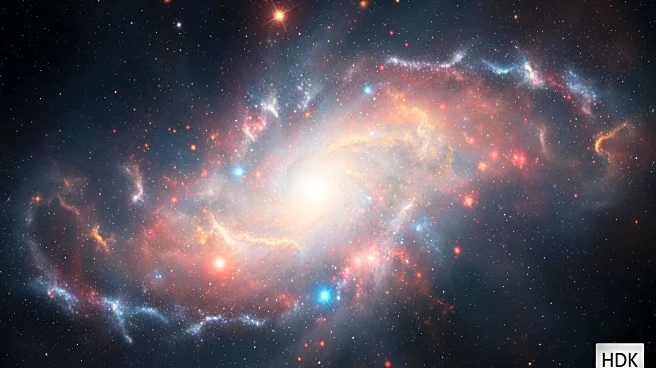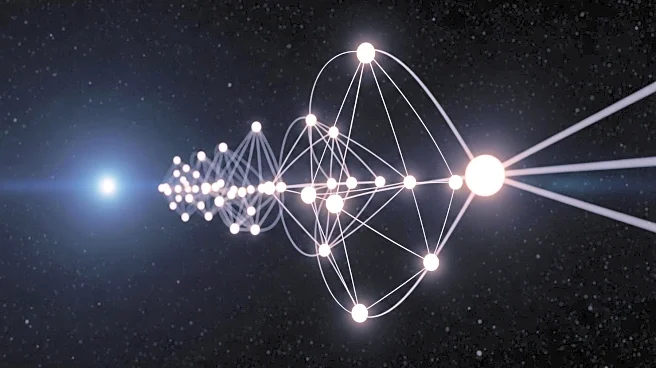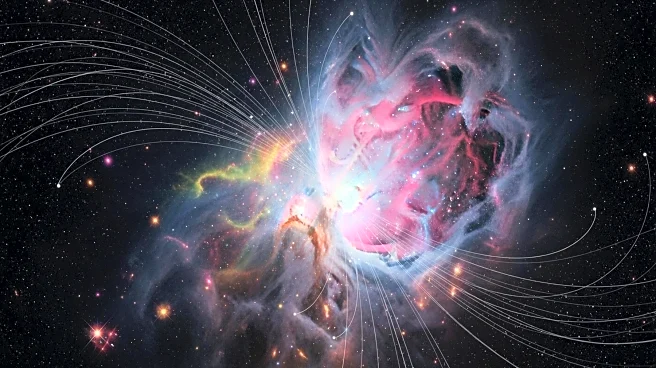What's Happening?
The James Webb Space Telescope has captured unprecedented images of Sagittarius B2, a massive molecular cloud located near the supermassive black hole at the center of the Milky Way. This region, densely packed with stars and star-forming clouds, holds only 10% of the galactic center's gas but is responsible for producing 50% of its stars. The telescope's Mid-Infrared Instrument has provided detailed views of Sagittarius B2 North, highlighting the dense gas and dust that will eventually form future stars. Despite the advanced capabilities of the Webb telescope, some areas appear dark and empty due to their high density, which even the telescope cannot penetrate. Researchers aim to use these observations to understand why star formation in the Milky Way's center is relatively low.
Why It's Important?
The discovery and detailed imaging of Sagittarius B2 by the James Webb Space Telescope are significant for astrophysics and our understanding of star formation. This region's ability to produce a substantial portion of the Milky Way's stars despite holding a small percentage of its gas presents a unique opportunity to study the processes involved in star formation. The insights gained from these observations could lead to advancements in our knowledge of cosmic evolution and the lifecycle of stars. Additionally, understanding the low rate of star formation in the galactic center could have implications for theories about galaxy formation and dynamics.
What's Next?
Researchers will continue to analyze the data from the James Webb Space Telescope to explore the mysteries of star formation in Sagittarius B2. The telescope's instruments may help uncover why star formation is low in the Milky Way's center, potentially leading to new theories and models. As astronomers study the stars' size and age, they will gain further insights into the star formation process, contributing to the broader field of astrophysics. The ongoing research promises to reveal more about the complex interactions between gas, dust, and stars in this active region.
Beyond the Headlines
The observations of Sagittarius B2 by the James Webb Space Telescope highlight the ethical and cultural dimensions of scientific exploration. As humanity continues to push the boundaries of space exploration, the discoveries made by such advanced instruments challenge our understanding of the universe and our place within it. The pursuit of knowledge through space exploration fosters a sense of wonder and curiosity, encouraging future generations to engage with science and technology. These efforts also underscore the importance of international collaboration in advancing scientific research and addressing global challenges.

